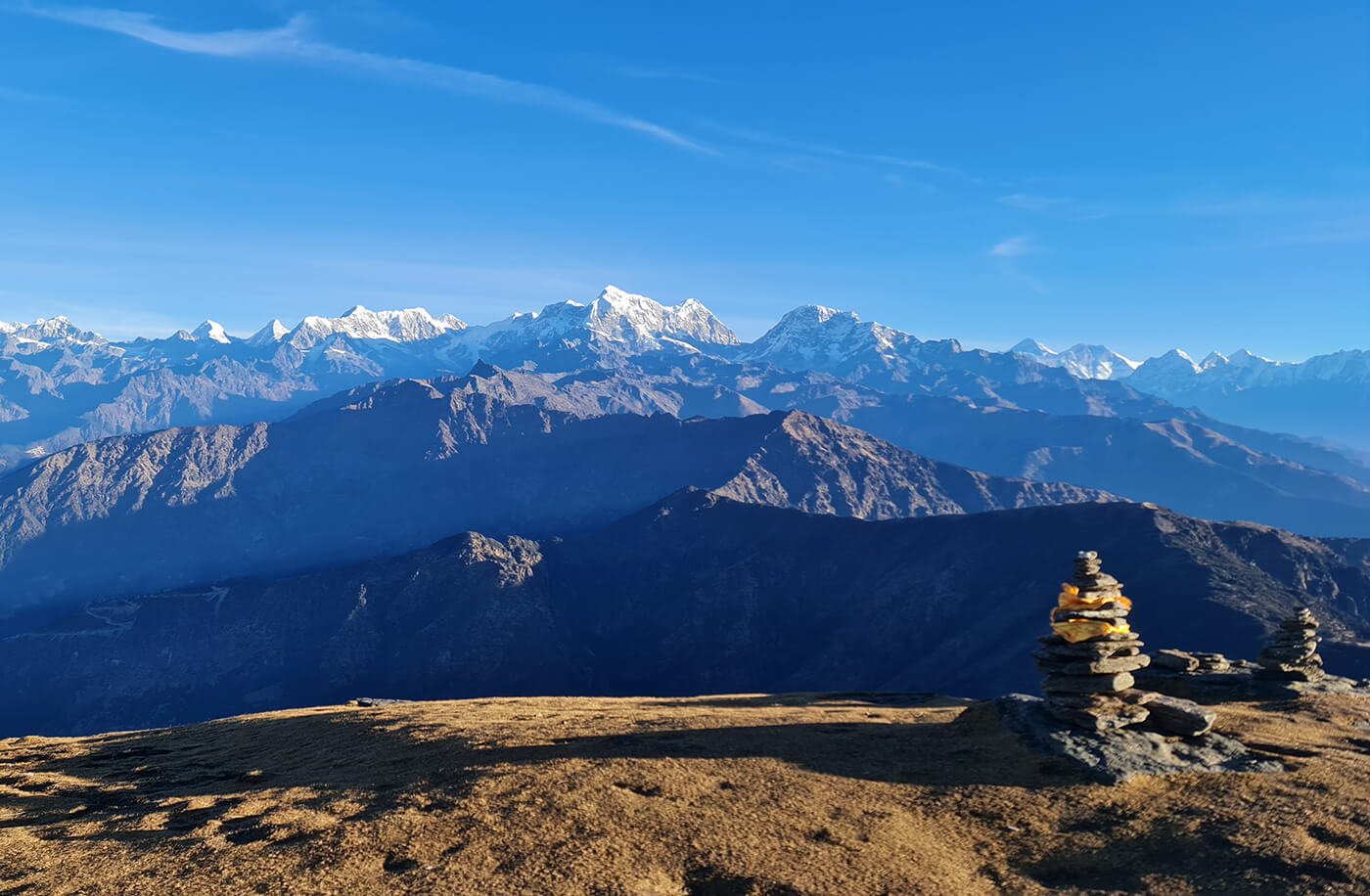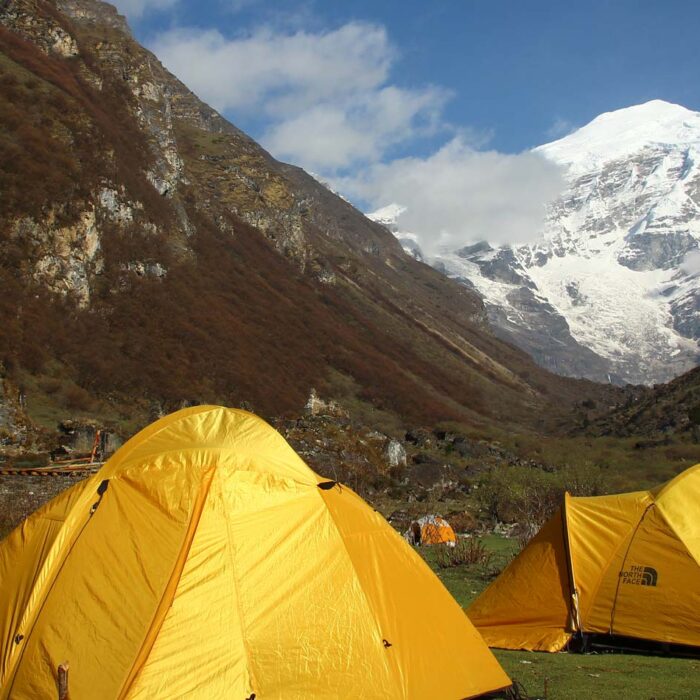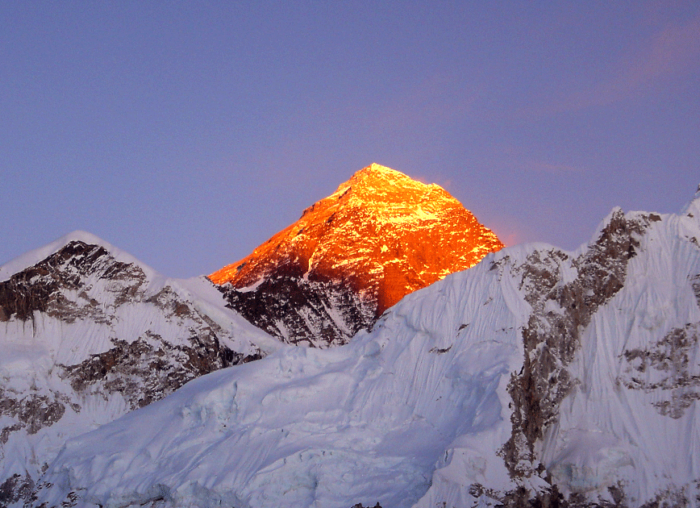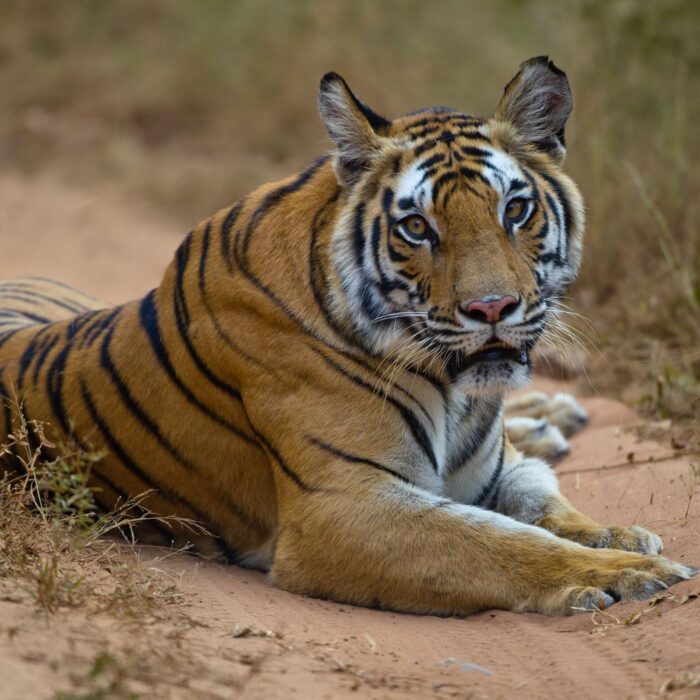The Pikey Peak trek also known as the Short Everest trek in Nepal offers a super cool hiking experience in the mountains. During this Everest view Pikey Peak 9-day trek, you’ll see the best view of the highest mountain in the world, Mt. Everest. The land and plants in the Khumbu region add to the beauty of the trek. Along the way, you’ll see lots of Buddhist monasteries, gompas, and stupas, making it feel spiritual. The pure air from the Himalayas clears your body, mind, and soul, it’s like magic!
How to Get There?
The Pikey Peak trek starts in Nepal, specifically in a place called Lower Khumbu. It lies in the Solukhumbu District. You begin the trek in Dhap, which is about a 6 to 7-hour drive from Kathmandu. However, if you prefer a quicker option, you can take a 30 minute flight to Phalpu from Kathmandu. Pikey Peak is very close to Kathmandu, and getting there is easy. Plus, on this trek, you get to see the view of Mt. Everest!
Difficulty of Trek
The Pikey Peak Trek offers a fair level of challenge compared to other treks near Everest. It follows a path that’s not crowded, with mostly flat ground and just a few tricky uphill parts. Even if you’re new to the trek, you can still enjoy it because you don’t need any special training. You’ll walk around 5 to 6 hours each day, and the whole trek takes about 9 days. The highest point you’ll reach is 4065 meters. Exercising a bit before the trek will help you have more strength and energy.
There aren’t many places to stay along the trail. Thus, it’s a must to book a room before you go. Also, make sure you know about the permits and visas you need,. It’s also really important to get a check up from the doctor before you start this trek.
Best Season
The best times for Pikey Peak Trekking are spring (February to May), autumn (September to December), and winter. During these times, fresh snow covers the mountain peaks, providing clear views. Additionally, spring and autumn offer warmer and more fair trek conditions, with clear days providing great mountain views. Although winter can be a bit windy, it has short and sunny days.
Accommodation
Because the Pikey Peak Trek isn’t as popular as some other paths near Everest, you’ll mostly find places to stay in lodges or homes run by locals. These cozy places have two bedrooms with blankets and pillows, and you have to share the toilets. Staying there certainly gives you a chance to get to know the people who live there, learn about their culture, and see how they live.
Food
Because the place is far away from other places, you won’t find a lot of packed food there. Instead, all the meals have veggies grown locally without any chemicals. The main meal is called Dal Bhat and curry, and it’s not just only tasty. It also helps your tummy feel better and can make being ill at high heights a bit easier.
Top View
The twin Pikey Peaks stands tall at 4068m. They are worldwide famous for their great sunrise and sunset views. On clear days, they offer a great wide view of Gaurishankar, Mt. Numbur, Mt. Everest, Mt. Lhotse, and other smaller peaks.
Local Culture Experience
The 9-day Everest view Pikey Peak Trek shows the special culture, traditions, and way of life of the people living there, such as Sherpas, Tamangs, and Magars. Colorful prayer flags line the paths, and you can see Buddhist Gumbas, stupas, and monasteries that reflect their Buddhist culture. The trek feels like taking a step into the daily lives of the people in the Himalayan regions.
How to Get a Nepal Visa?
You can get Nepal visas upon arrival at Tribhuvan International Airport. To make the process faster and avoid long lines, fill out the Online Nepal Visa form a week before you arrive. Bringing a printed copy with the proof number helps you get through Immigration faster. Make sure you have enough cash for the visa fee when you arrive, as the cost depends on how long you’re staying and how often you’re entering. Also, we suggest you check our tourist visa in Nepal as there have been some major changes.
Beyond Everest Pikey trek
Are you looking for other options other than the Everest view pikey peak trek? Explore other treks such as
Please check our trek equipment list. This list will be a guide for you if you plan to trek in Nepal. Similarly, you can check our AMC (Acute Mountain Sickness) which can be a good guide for you to learn more about getting ill at high heights in Nepal. Also, if you want to do a Peak climb in Nepal then please check the climbing equipment list that is a must while going on the Peak climb. Likewise, we suggest you check the updated TIMS card rule as there have been some new changes in Nepal.
Booking is Open for 2024 / 2025
Are you planning to do a Short Everest Trek or a similar trek in 2024? If so, then in our Best Deals part, you can find the ideal information on the best price for the trek cost. Furthermore, book plans as soon as possible.
Contact us for a Short Everest trek or Send a message or call us at
WhatsApp / Viber / Mobile: + 977 – 9851 022814, + 977 – 9841 451681
We are available 24/7
For further information, Contact us.
Itinerary
Day 1: Arrival in Kathmandu 4593 ft. (1400 m)
Arrive in Kathmandu. Upon arrival, transfer to your hotel. We will do the trek briefing and apply for your trek permit with a trek guide introduction.
Overnight at Hotel in Kathmandu
Day 2: Drive to Dhap, Trek to Japre 9580 ft. (2920 m) 8 Hours’ drive & 4 hours walk
Your journey kicks off with an extensive 8-9 hour drive from Kathmandu to Dhap. Once you’ve reached a ridgeline just south of Dhap, the trek officially begins. As you approach Sigane, your eyes will be drawn to the majestic Numbur Himal peaks, which will become your constant companions along the way.
Initially, the trail from Sigane follows a road that’s currently under construction, lasting for the first couple of hours. Your first destination is the charming village of Japre, situated at an elevation of 2920 meters (9580 feet). This village is perched high above a deep valley, providing delightful vistas of both Everest and the Numbur Himal range. Here, you’ll find a picturesque Gompa and stupa, marking your resting place for the night.
Breakfast, Lunch, Dinner & Overnight at Local Lodge
Day 3: Trek from Japre to Pikey Base Camp 11,942 ft. (3640 m) 6-7 hours walk
Following your overnight stay in Japre, the trail ascends towards a grassy ridge known as Bhulbhule. Here, a solitary lodge with no particular name offers you a welcoming stopover, along with splendid vistas of the Everest range.
Shortly after Bhulbhule, the trail bifurcates, and you’ll veer to the right, embarking on the path leading to Pikey Peak. Along the way, you’ll pass by some traditional yak houses and a lengthy Mani stone wall. The trail then gently contours the hillside beneath Taklung Danda, guiding you through a picturesque forested route adorned with abundant rhododendron blooms during the spring season.
As you emerge from the forested section, you’ll find yourself just about 2 hours away from Pikey Peak’s base camp. From this point, a brief ascent remains to reach the summit, which stands at an elevation of 4065 meters (13,336 feet). It’s advisable to plan your summit climb in the morning, ideally for the sunrise, to maximize the chances of clear views, as evenings can often be less favorable in terms of visibility.
Breakfast, Lunch, Dinner & Overnight at Local Lodge
Day 4: Sunrise at Pikey Peak, Trek to Loding 8,251 ft. (2515 m) 8-9 hours walk
Commencing your journey early in the morning, you’ll trace a gradual path adorned with prayer flags, leading you to the summit of Pikey Peak. As you ascend, prepare to be awestruck by the breathtaking scenery that unfolds before you. On clear days, you’ll be treated to an expansive panorama stretching from Annapurna to Kanchenjunga.
From the pinnacle of Pikey Peak, your path meanders along a ridgeline. Initially flat, the terrain gradually steepens as you venture into the forest, eventually reaching Jase Bhanjyang, where a hearty breakfast awaits. After replenishing your energy, your trek continues, taking you downhill toward Loding. This segment of the journey includes some steep sections through the lush forest. Upon arriving in Loding, you’ll find a selection of simple and charming accommodation options to choose from, offering a comfortable resting place for the night.
Breakfast, Lunch, Dinner & Overnight at Local Lodge
Day 5: Trek from Loding to Junbesi, Visit Thubtenchoeling Monastery 4-5 hours walk
Your day begins by descending along the ridgeline to reach Jase Bhanjyang for breakfast. Afterward, you have a few options for your descent towards Junbesi. One of the most picturesque routes is a breathtaking shortcut trail that veers off the ridge shortly after Jase and descends steeply through a spectacular old-growth forest, eventually leading you to Taktor. This trail intersects with the Everest Base Camp trail originating from Jiri. Tea houses in this area tend to be more developed, and you may encounter fellow tourists for the first time on your trek.
From Taktor, it’s a pleasant couple of hours on a charming trail that brings you to Junbesi. Situated at an altitude of 2675 meters (8776 feet), Junbesi is a traditional Sherpa village and a cradle of Sherpa culture and architecture. The Sherpa community regards the Solukhumbu region as a sacred valley. In this remote corner of Nepal, bordering Tibet, Buddhism thrives, and you’ll come across numerous Buddhist monasteries as you continue your journey.
Breakfast, Lunch, Dinner & Overnight at Local Lodge
Day 6: Trek from Junbesi to Taksindu 9711 ft. (2960 m) 5-6 hours walk
Set out on your morning trek towards Taksindu. Begin by crossing the river at the lower part of town and ascending through the lush forest. Your path will lead you up to Salung, offering breathtaking views of Mount Everest (8848 m/ 29,028 ft.), Chamlang (7319 m/ 24,012 ft.), and Makalu (8481 m/ 27,824 ft.), weather permitting. Additionally, there are stunning vistas of Chiwong Monastery across the valley and the scenic Phaplu area.
As you continue along the trail, it contours the landscape before descending to a serene stream. Afterward, a brief climb takes you into Ringmo, renowned for its apple orchards and unique apple products like apple rakshi (alcohol), cider, and apple pie. From Ringmo, a final short ascent leads you to Taksindu La, offering yet another opportunity for awe-inspiring mountain views. Finally, descend briefly to reach the Taksindu Monastery and your lodge. The Taksindu Monastery, constructed in 1946, is typically open in the early morning and late afternoon. If you visit, kindly consider leaving a donation to support the monastery’s upkeep and activities.
Breakfast, Lunch, Dinner & Overnight at Local Lodge
Day 7: Trek from Taksindu to Phaplu, Visit Chiwong Monastery 8067 ft. (2459 m) 5-6 hours walk
Today, depart from the main trekking route once more, opting for a scenic trail that descends through the lush forest towards Phaplu. Along the way, you’ll have the option to hike up to Chiwong Gompa, an enchanting monastery nestled high on a cliff, and offering commanding views of the valley below. Established in 1923, this monastery is particularly renowned for its grand celebrations during the Mani Rimdu festival in the autumn season.
Carry on your journey as you descend into Phaplu, where you can celebrate the successful completion of your remarkable trek at a cozy tea house.
Breakfast, Lunch, Dinner & Overnight at Local Lodge
Day 8: Drive from Phaplu to Kathmandu 4593 ft (1400 m) 9-10 hours’ drive
Today marks our departure from the mountainous terrain as we embark on a vehicle journey back to the Kathmandu Valley. Upon reaching Kathmandu, we will ensure your transportation to your chosen hotel, and the evening will be at your disposal to unwind and rest after a lengthy drive. Driving time: Approximately 10 hours.
Breakfast, Lunch & Overnight at Hotel in Kathmandu
Day 9: Departure transfer
Breakfast at the hotel & transfer to Kathmandu airport in time to board your flight back home.
Frequently Asked Questions (FAQ)
Q1. What is Pikey Peak trek?
Pikey Peak trek is a relatively short and moderate trek in the Solu-Khumbu region of Nepal. It offers breathtaking views of several Himalayan peaks, including Mount Everest, Makalu, Kanchenjunga, and more.
Q2. How long is the Pikey Peak trek?
The trek can vary in duration depending on your starting point and the specific itinerary, but it typically takes around 7 to 10 days to complete.
Q3. What is the best time to do the Pikey Peak trek?
The best time for the Pikey Peak trek is during the spring (March to May) and autumn (September to November) seasons when the weather is most stable, and the views are clear. Trekking during these months ensures better visibility and comfortable temperatures.
Q4. Is a permit required for the Pikey Peak trek?
Yes, you need permits to trek in the Solu-Khumbu region, including the Pikey Peak trek. You will need a Sagarmatha National Park Entry Permit and a Khumbu Pasang Lhamu Rural Municipality Permit.
Q5. What is the difficulty level of the Pikey Peak trek?
The Pikey Peak trek is considered a moderate trek, suitable for trekkers of various experience levels. It involves some steep ascents and descents, but it is not as challenging as some of the more strenuous treks in the region.
Q6. What is the starting point of the Pikey Peak trek?
The trek can start from various locations, including Jiri or Phaplu, which are accessible by road from Kathmandu. Some trekkers also opt for a longer route from Lukla.
Q7. What is the highest point on the Pikey Peak trek?
Pikey Peak itself is the highest point on the trek, standing at an elevation of 4,065 meters (13,336 feet).
Q8. What is the accommodation like on the Pikey Peak trek?
Accommodation options along the trekking route include teahouses and guesthouses. These are basic but provide essential amenities such as meals and lodging. It’s a good idea to book in advance during peak trekking seasons.





